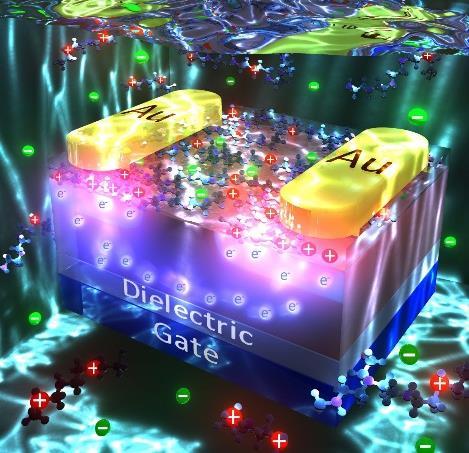10월 31일(목) 대학원 세미나 / Asst. Prof. Bright Walker (Department of Chemistry, Kyung Hee University)
| 초청강사 | Asst. Prof. Bright Walker |
|---|---|
| 소속 | Department of Chemistry, Kyung Hee University |
| 일시 | 2019년 10월 31일(목) 오후 5:00 |
| 장소 | 아산이학관 331호 |
Engineering energy band structures in organic and hybrid semiconductor devices using
non-conjugated polyelectrolyte films
Conjugated polyelectrolytes have long been known as effective interfacial layers in a variety of organic optoelectronic devices such as LEDs, solar cells and transistors. More recently, molecular electrolytes have been shown to cause doping in organic semiconductors. This talk reviews recent work done using non?conjugated polyelectrolyte (NPE) layers to achieve controlled N-type and P-type doping at interfaces in organic and hybrid electronic devices. To enhance electron injection in n-type organic field-effect transistors (OFETs), NPE layers were interposed between a [6,6]-phenyl-C61-butyric acid methyl ester (PCBM) layer and Au electrodes. NPEs based on an ethoxylated polyethylenimine (PEIE) backbone with various counterions including Cl-, Br- and I- improved electron mobilities up to ~10-2cm2 V-1s-1 and yielded on-off ratios (I on /I off ) of 105 in PCBM OFETs. Ultraviolet photoelectron spectroscopy (UPS) revealed that all of the NPEs reduced electron injection barriers (φe) at the NPE/metal interface. Absorption measurements suggested n- doping of the PCBM. Regardless of the type of anion, thick NPE layers led tohigh conductivity in the films independent of gate bias, whereas thin NPE layers led to dramatically improved electron injection and performance. This mechanism was further applied in perovskite solar cells and light-emitting solar cells. Cationic and anionic polyelectrolytes were able to improve electron and hole injection in perovskite solar cells by analogous n-type and p-type doping mechanisms, respectively. These results demonstrate that thin electrolyte layers can be used to achieve controlled doping at interfaces in organic and hybrid semiconductors.


